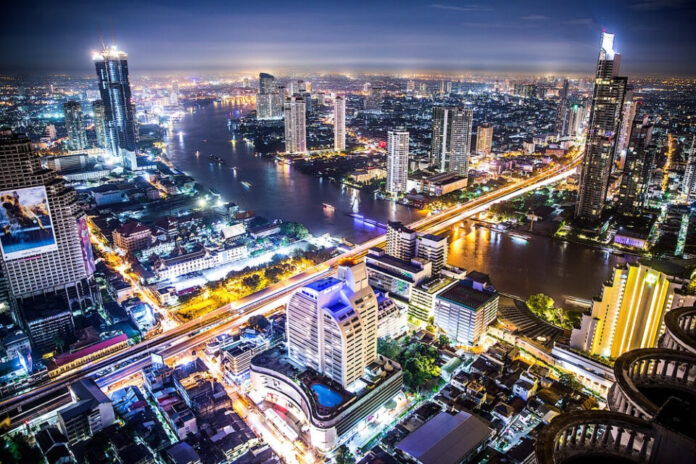In a fast-changing world where global issues such as the Covid-19 pandemic, the Russia-Ukraine war, and the US-China trade war have disrupted the movement of goods, firms globally are looking to strengthen and diversify their supply chains.
The conflict between two of the largest commodity manufacturers has led to an energy and food crisis, with sky-high energy prices and food scarcity.
Southeast Asia has emerged as an attractive hub for global businesses to shift their production capabilities. This is primarily due to the lower labor costs, and having one of the fastest growing consumer and retail markets globally.
For instance, in labor-intensive industries, there have been movements in supply chains from China to ASEAN nations.
ASEAN is expected to emerge as the fourth biggest economy before the next decade.
It is also noteworthy that trade in Southeast Asia is now 30 percent higher than pre-pandemic levels. Undoubtedly, supply chains in Southeast Asia have proven to be resilient and diversified.
The future of trade in Southeast Asia will be heavily dependent on relations between its European and Asian partners. ASEAN nations have also decided to invest in their trading ports and leverage digitalization to increase their competitive advantage.
Sustainability is also a key theme for Southeast Asian countries as they seek to reduce carbon emissions by building electric vehicle supply chains.
In December 2022, leaders from both ASEAN and the European Union will participate in a summit to discuss trade and supply chain matters. Both blocs believe that they can collaborate more closely in trade and play a pivotal part in each other’s supply chains.
According to the United Nations, ASEAN is one of the EU’s biggest trading partners, having traded goods and services worth $250 billion in 2021.
The European Union has signed free trade agreements with ASEAN nations Vietnam and Singapore. The bloc is still pursuing trade agreements with other Southeast Asian countries and eventually hopes to conclude an FTA with the entire Asean bloc.
The Regional Comprehensive Economic Partnership Agreement was signed in November 2020 by all Asean countries and 5 Asian nations namely Australia, China, Japan, New Zealand, and South Korea.
The countries in the agreement will combine and share their expertise in agriculture, manufacturing, and technology. They will also benefit from the Chinese Belt and Road Initiative’s financing, and leverage its communication, energy, and transport facilities.
The agreement was enforced in January 2022 and covers approximately one-third of the global population. The Brookings Institution believes that ASEAN will earn $19 billion yearly from the trade agreement and add $500 billion to global trade by the end of this decade.
China’s newly developed Land-Sea Corridor will connect China and Southeast Asia.
This trading route has facilitated the shipment of 216,000 standard containers, enabling the trading of goods via the corridor to increase by 30 percent in the first 6 months of 2022.
The Land-Sea Corridor will foster greater trade collaboration between China and Southeast Asia.
This trade passage will leverage comparative advantages and create convenience, saving precious time and costs. More significantly, the corridor will connect with 319 ports internationally.
As the maritime sector is flourishing with record shipping volumes, Southeast Asian nations seek to develop their port infrastructure.
Singapore’s Tuas Mega Port was launched recently and will be the largest fully automated port internationally. This $20 billion infrastructure reaffirms Singapore’s reputation as an international trading hub.
Taking advantage of digital transformation, the port will leverage artificial intelligence and machine learning to analyze complex information and expedite shipping operations.
For instance, containers will be conveyed around the port in driverless vehicles.
Singapore has also leveraged other digital solutions in order to optimize supply chains.
Singapore’s Minister for Communications and Information Josephine Teo launched SGTraDex in June 2022, a common digital platform allowing for the seamless exchange of data. This will lead to a significant increase in efficiency and visibility.
Similarly, Vietnam has launched a new master plan to develop its seaports.
The seaports are significant drivers of Vietnam’s economy, given that it manages 90 percent of the nation’s imports and exports. Currently, Vietnam has 25 international shipping routes and has enticed international port operators to invest in and develop Vietnam’s port infrastructure.
The new master plan hopes to reduce congestion, and enhance the competitiveness and effectiveness of its port infrastructure. This is while leveraging science and technology, and embracing modernization and industrialization.
As a priority, the Vietnamese government will focus on improving the port infrastructure for the Mekong Delta region.
In order to meet climate change and sustainability targets by decarbonizing the economy, ASEAN countries have started to develop electric car supply chains.
Indonesia and Thailand are attractive locations to set up car manufacturing factories, with government incentives, a skilled workforce, and the right technological infrastructure.
The former has the biggest nickel reserves globally, which are raw materials needed to make electric vehicle batteries. Indonesia’s government has partnered with LG Energy Solution and Hyundai Motor Manufacturing to develop an electric vehicle battery production factory.
Thailand is a frontrunner in the production of electric vehicles, with the right ecosystem and infrastructure in place.
Thailand hopes to build 12,000 electric vehicle charging stations, and it is predicted that the production of electric vehicles will make up 30 percent of Thailand’s total car production by the end of this decade.
Hyundai is setting up a research and development facility in Singapore to explore smart and sustainable automobile solutions and develop modern and intricate technologies.
As Southeast Asia recovers from the pandemic, harnessing both digitalization and sustainability will be crucial for economic development and trade.
Writer’s name: Ong Bo Yang
Biography
I am currently a Masters’s student, majoring in Master of Science in Programme and Project Management at the University of Warwick.
I have written 20 Op-Eds for 12 ASEAN newspapers, including Cambodia’s The Phnom Penh Post, Philippines’s Daily Tribune, Singapore’s The Business Times, Thailand’s Bangkok Post, and Vietnam’s VNExpress.




